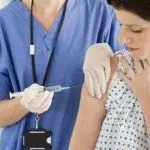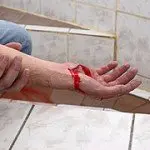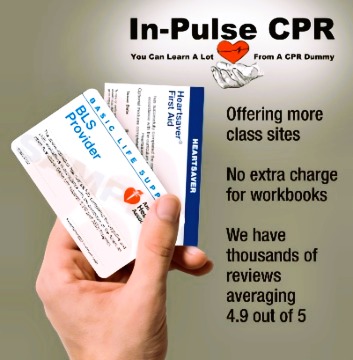Proper precautions and training can prevent the spread of bloodborne pathogens
written by Pearl Salkin |
If a lab technician at a major medical research center in the United States drops a glass beaker on a counter and it breaks, it’s highly unlikely that any bloodborne pathogen that might be present will find a series of human hosts and cause a worldwide epidemic. Such facilities fall under the governance of the Occupational Safety & Health Administration (OSHA), which sets a standard that saves workers and the public from these biological hazards.
Basically, a bloodborne pathogen is a microorganism that is infectious. When present in blood, any one of numerous microorganisms can cause disease in humans. If precautions are taken at sites where transmission of these pathogens is likely, the risk of spreading the infection is virtually eliminated.

While the scourge of AIDS and HIV, the virus that causes it, have made scary news headlines for 30 years in the U.S., two other bloodborne pathogens strike fear in the hearts of those who are informed. Those two terrifying culprits are hepatitis B (HBV) and hepatitis C (HCV). Though they certainly get less fanfare, they have been spreading across the country and around the globe at an alarming rate.
The simplest way to safeguard against the proliferation of bloodborne pathogens is to stop them in their tracks at sites of possible contagion. In the workplace, that means adequately training anyone who has a likelihood of coming into contact with human blood in the proper procedures for dealing with what can be a deadly substance – human blood that could contain readily contractible pathogens.
OSHA has identified occupations and industries that warrant the issuing of both general and educational guidelines, and specific rules, such as the Needlestick Safety and Prevention Act. The details of their edicts cover a gamut of subjects involving training. They range from how to minimize the risk of occupational exposure to what methods should be employed when an accident happens and a cut in the skin involving contaminated sharps becomes a health threat.

Obviously, people who work as lab techs, doctors, nurses, dental hygienists, EMT’s, hospital housekeeping personnel, tattoo artists and the like often come in contact with human blood routinely and should receive instruction on the latest methods for preventing their own infection and making sure others in contact with them and/or their workplace are protected, too. Often overlooked is the good Samaritan who rushes to a small retail store’s first aid kit when a fellow employee accidentally slices his finger open with a box cutter. But there are others who seem to fall through the safety net, such as lumberjacks, mechanics, machinery operators, warehouse staff, craftsman, butchers (the list is endless) that have a potential to be exposed to another coworkers mishap.
According to OSHA – Occupational Exposure means reasonably anticipated skin, eye, mucous membrane, or parenteral contact with blood or other potentially infectious materials that may result from the performance of an employee’s duties.
In light of the disastrous consequences of second-guessing a workplace’s preparedness to handle an incident that seems minor on the surface – bandaging a co-worker’s cut – a business owner or institution or organization director or manager should look into expanding first aid training. Just because a workplace isn’t under an OSHA bloodborne pathogen infection mandate doesn’t make that workplace a safe one. Training that covers every preventative measure that can be taken to protect employees and the public is a prudent investment.





COMMENT (1)
Carol / December 27, 2011
I guess the best and most practical way to be prepared to handle an incident is to wear gloves if you know you there is a possibility of coming in contact with with bodily fluids/blood. Even if you wear gloves, it is important that you wash your hands after proper removal of the gloves. Not sure, how to do that? Sign up for a first aid class (any AHA first aid class) will make certain you know how to properly remove gloves. Seems simple, but it is so important.